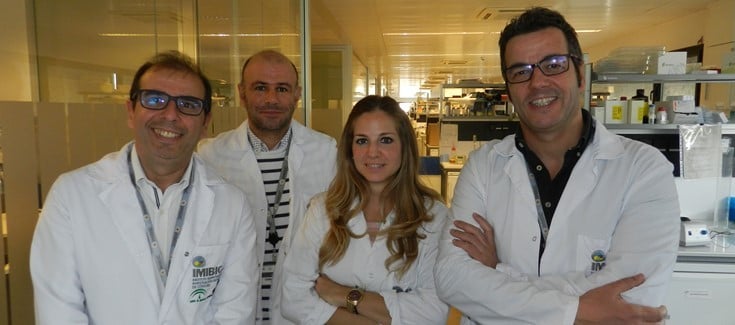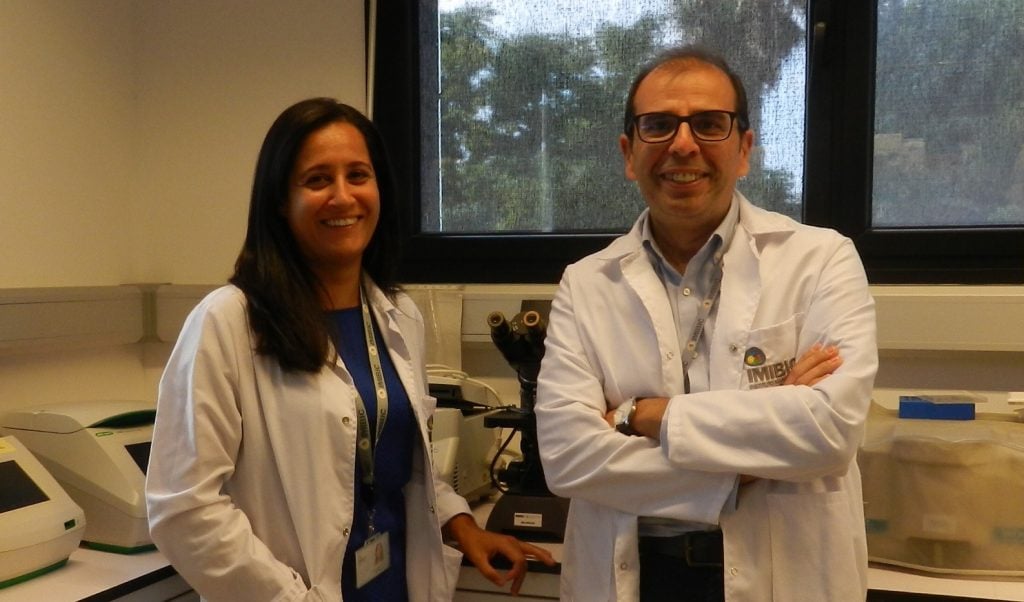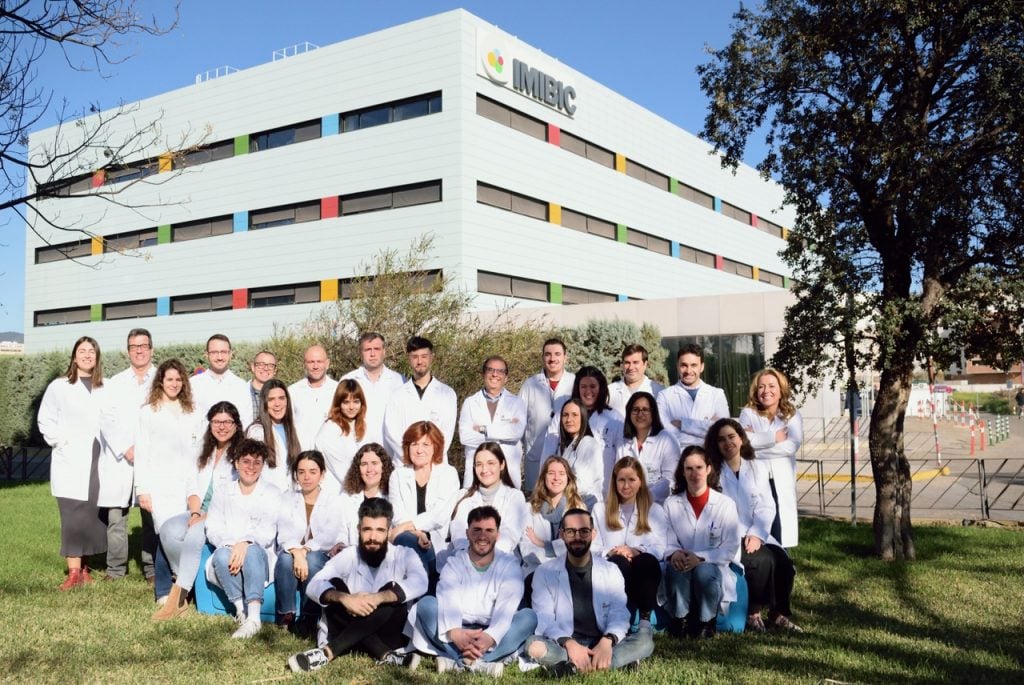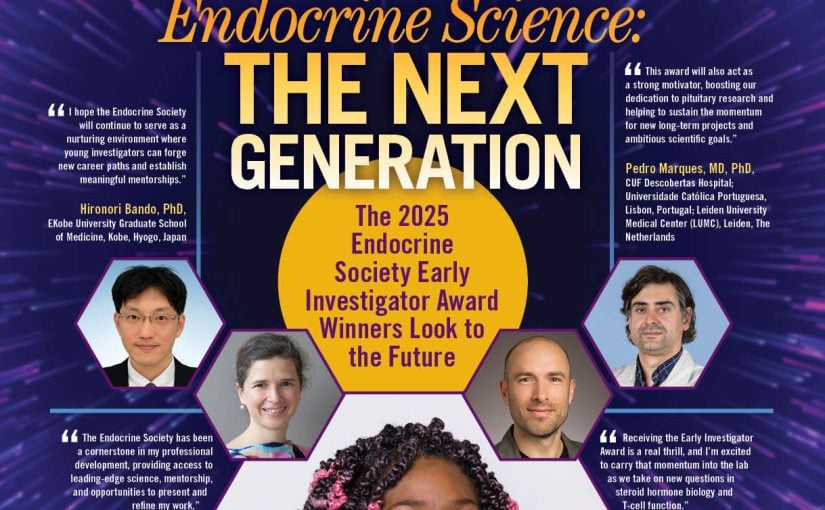
Starting in January 2026, the masthead of the Endocrine Society’s flagship basic science journal Endocrinology will have a new name at the top: Manuel Tena-Sempere, MD, PhD. He speaks to Endocrine News about his new role, how the journal has impacted his own research career, and how he plans to make the journal more appealing for endocrine scientists around the world.
Sitting in his office in Cordoba, Spain, Manuel Tena-Sempere, MD, PhD, was still reeling from the massive blackout that knocked out power to everything from offices, homes, communication systems, to transportation for millions of people across Spain and Portugal on April 28. Nearly 24 hours later, power was finally restored — which was a great moment because Tena-Sempere is a very busy man these days.
In April, the Endocrine Society announced that Tena-Sempere would be the next editor-in-chief of its flagship journal Endocrinology starting January 2026. He is also a professor of physiology at the University of Cordoba, a research group leader at the biomedical research institute of Cordoba (IMIBIC), and a principal investigator at the Spanish network of Research on Obesity and Nutrition (CIBEROBN) in Cordoba.
Tena-Sempere is no stranger to Endocrinology. He served as the journal’s associate editor for four years (2013-2017) and has published 67 papers in the journalsince 1993. He has also published more than 380 articles in international peer-reviewed journals and has served as a member of editorial boards of more than 15 scientific journals.
Endocrine News spoke with Tena-Sempere to learn more about his visions for the journal as he takes over the helm and what challenges may come along the way.
Endocrine News: What was your reaction when you first heard the news of your new role?
Tena-Sempere: Well, I was amazed and also a bit stunned. Of course, it’s a big honor and responsibility at the same time. It is true that I applied for the position, but it’s also true that I was not expecting this sort of outcome. I’m trying to adapt myself to the idea that I will become the editor in a few months. I’m already working on that, of course, because the transition period is very critical to keep the journal moving and growing at the same time. I am in the process of choosing new editors and we will start handling new journal submissions from September and October 2025 onwards. I have already been in contact with the present editor-in-chief, Zane Andrews, and deputy editor, Gail Prins, of the journal, who are being extremely helpful and friendly. The publication staff is also helping to navigate through this transitional period, but it’s a big responsibility.

EN: What prompted you to apply for the big challenge?
Tena-Sempere: I knew the position was open and there was a call for applicants, and at the beginning, I did not apply. But I was informally approached by the head of the search committee who suggested the possibility. Initially, I did not consider that as an option because I have many other commitments, including European projects and other academic activities at my home university and research institute.
At the same time, I realized this is a big and very exciting professional challenge because my primary activity is research, and I see this as a kind of continuation of that — being able to contribute to the consolidation and the growth of a journal that I consider kind of a top reference in the field.
While I have collaborated with different scientific journals, I can say that I would have not considered becoming editor-in-chief of any other journal, because of Endocrinology’s long tradition and my long contact with the journal, both as author and as associate editor when Andrea Gore was editor-in-chief. That was quite a fantastic period, because I learned a lot. I had the experience of interacting with amazing people, evaluating groundbreaking papers, and working with a large body of reviewers. So, altogether, it made me consider the possibility of becoming, or at least applying, to become editor-in-chief.
EN: How has Endocrinology impacted your professional career? Why has it been the sought-after outlet for publishing your research?
Tena-Sempere: While I am an MD by training, after completing my degree, I undertook a doctoral program and always stayed in basic and translational science since then. For me, working in endocrinology, publishing in Endocrinology, as the flagship journal in basic science of the Endocrine Society, has been always a top achievement. I do believe several of the most impactful papers from my group have been published in Endocrinology. And although the landscape of publications has changed over the last two decades because more journals, with different profiles, are coming into the field and it’s getting more and more competitive, I continue to consider that its combination of history, prestige, reputation, and scientific rigor makes Endocrinology a top research journal, particularly for those working in the domain of basic and experimental endocrinology. With continuous online publishing for a global readership — as is the case for all journals in the Endocrine Society’s portfolio – Endocrinology is among the most cited journals in its Endocrinology and Metabolism subject category of 187 journals, with that category’s longest median citation half-life, 14.8 years.
EN: What is your vision for the journal? Is there anything you might want to change in the first couple of issues?
Tena-Sempere: I think that we have a very solid base in that Endocrinology is a journal with a big tradition and reputation. While there is always room for improvement, I do not think we have to revolutionize the whole thing because previous editors-in-chief and editorial teams have done a superb job. Anyhow, we must realize that the publication landscape has evolved, and this sort of renovation always helps to bring new angles that could help improve the journal. We must be attentive to this dynamic process to balance the solid grounds and evolution within the journal in the coming years.

At the same time, we must become more attractive to a wider audience, worldwide. I believe Endocrinology is seen as a very reputable journal for those, as is my case, who know it already as a reference in the field. But, especially outside the U.S., there is more to be done to familiarize the new generation of endocrinologists with the journal as their publication venue of choice.
So, the challenge is to make Endocrinology the first choice of submission for top papers in the field of basic endocrinology. And we have opportunities to widen our target audience, and at the same time attract more authors on more topics. For instance, Endocrinology is fundamentally based in relatively classical areas, but now new cross-organ interactions or novel technologies are becoming hot topics in endocrinology more and more. Among the initiatives to move these expansions forward, the journal is introducing Focused Collections of articles, organized around a common topic, with a Guest Editor who is a prominent name in that field and in a position to reach out to other experts in that field to submit papers for peer review. The collections are snapshots of the selected topics, with impactful original articles from prominent active scholars, serving as a resource for experts, students, and senior researchers alike.
It’s also important to bring in early-career researchers. When I go to commissions or evaluation panels in Spain or Europe, the younger generation of researchers are not necessarily familiar with Endocrinology. We will be working on ways to make the journal more attractive for early-career researchers wherever they are located, including highlighting their authorship of articles, and expanding the journal’s ongoing program to train early-career researchers as reviewers. .

EN: With U.S. federal grant funding for research in a precarious spot at the moment, do you think researchers will have a difficult time maintaining their global partnerships and collaborations?
Tena-Sempere: It’s a big challenge. But the Endocrine Society is a global society, with members and programs around the world. We must keep the reputation of Endocrinology as a top-tier international journal that is the destination for groundbreaking papers from all countries worldwide, for our 18,000 members as well as for the many non-members who publish with us. In this sense, besides maintaining its solid science, we can learn from what authors experience during the submission and peer review process to make Endocrinology even more friendly and attractive. And for Endocrine Society members, it must be remembered that regular publication fees are waived, which may be very useful these days.
Of course, the evaluation and standards must remain as strict as ever because this is key to keeping the reputation of solid science. We must do our best to translate the reputation of the journal into higher international impact and visibility. The challenge is how to cope with this dynamic and changing landscape of the publication business that is making us, the scientists, a little bit crazy.
EN: You have an extremely full plate, but when you’re not at work, what do you do to unwind?
Tena-Sempere: I have to say as scientists, we do not separate very well between work and private life. But when I do have free time, I really enjoy spending it with the family and traveling. I also like a lot of movies, but I also have to say, I don’t have too much time to go to cinema these days.
Shaw is a freelance writer based in Carmel, Ind. She’s a regular contributor to Endocrine News and writes the monthly Laboratory Notes column.

